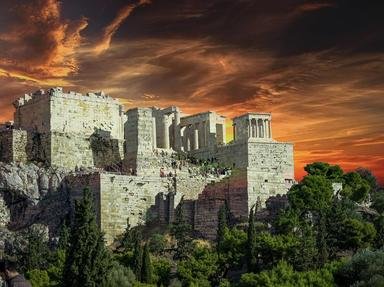Quiz Answer Key and Fun Facts
1. Which ancient civilisation is generally believed to be the beginning of Ancient Greek culture?
2. Ancient Greece was a religious society with many gods, and their pantheon included gods for just about everything. The stories of their exploits and interactions with humanity have been told and retold many times by writers such as Homer. Who were the chief god and goddess?
3. One of the most famous of the Greek legends is the 'Odyssey', which tells the story of the return of the Hero, Odysseus, to Ithaca at the end of the Trojan war.
Odysseus had many talents and he was the inventor of a famous artifact which gave rise to the saying 'Beware of Greeks bearing gifts'. What was it?
4. Everyone knows that the modern Olympic Games actually originated in Ancient Greece. Many of the sports the athletes competed in are still a part of the modern Olympic Games, but the ancient version differs considerably in certain aspects. Do you know what they are?
5. The Parthenon stands on the Acropolis above the modern city of Athens, and was a temple dedicated to the Goddess Athene. There were many sculptures, known as the Parthenon marbles, adorning the building, but they were removed by a purchaser in the early 1800s and since then have resided in the British Museum in London. Who was this purchaser?
6. One of the world's most famous soldiers of all times was Alexander the Great. He came from Greece - do you know which part?
7. Ancient Greece was a place of great learning, and there were many scientists and philosophers whose ideas and inventions have come down to us through history. One of the best known invented a mechanism for raising water, and established the foundations for the science of hydrostatics, among many other achievements. Who was he?
8. Perhaps one of the greatest legacies left to us by the Ancient Greeks was their system of government. What was it?
9. We have a rich legacy of myths and legends about the Greek gods and heroes. People have probably always wondered just how much truth there is in these stories, but it seems that some of them at least do have a basis in fact. In 1871 a German called Heinrich Schliemann began excavating a very famous city. Which one was it?
10. On the island of Crete are the ruins of a great palace complex associated with the civilisation of Minoan Crete, which were excavated in the 1900s by Sir Arthur Evans. What is its name?
Source: Author
invinoveritas
This quiz was reviewed by FunTrivia editor
bloomsby before going online.
Any errors found in FunTrivia content are routinely corrected through our feedback system.

